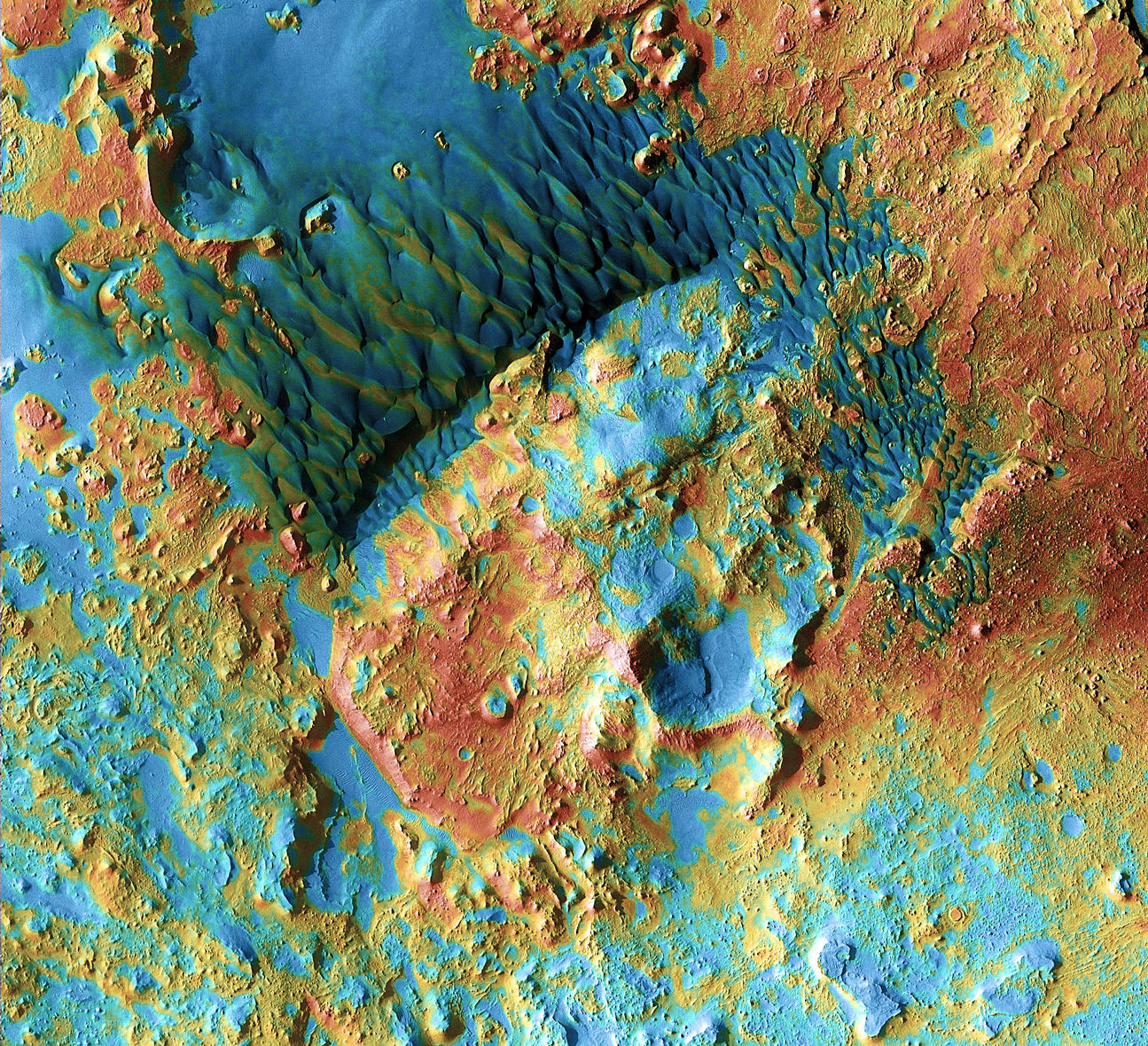Arabia Dunes

| Credit | NASA/JPL-Caltech/University of Arizona/HI-RISE |
|---|---|
| Language |
|
The battered region of Arabia Terra is among the oldest terrain on Mars. A dense patchwork of craters from countless impacts testifies to the landscape's ancient age, dating back billions of years.
In eastern Arabia lies an anonymous crater, 120 kilometers (75 miles) across. The floor of this crater contains a large exposure of rocky material, a field of dark sand dunes, and numerous patches of what is probably fine-grained sand. The shape of the dunes hints that prevailing winds have come from different directions over the years.
This false-color image, made from frames taken by the Thermal Emission Imaging System (THEMIS) aboard NASA's Mars Odyssey orbiter, shows the center of the crater's floor. The image combines a daytime view at visible wavelengths with a nighttime view at infrared (heat-sensing) wavelengths, giving scientists clues to the physical nature of the surface.
Fine-grained materials, such as dust and the smallest sand particles, heat up quickly by day and cool off equally quickly at night. However, coarser materials-bigger sand particles, gravel, hardened sediments, and rocks- respond more slowly to the same daily cycle.
This means that when THEMIS views these coarse materials late in the Martian night, they appear warmer than the pools and patches of finegrain sand. In the image here, areas that are cold at night appear in blue tints, while the warmer areas show in yellows, oranges, and reds.

